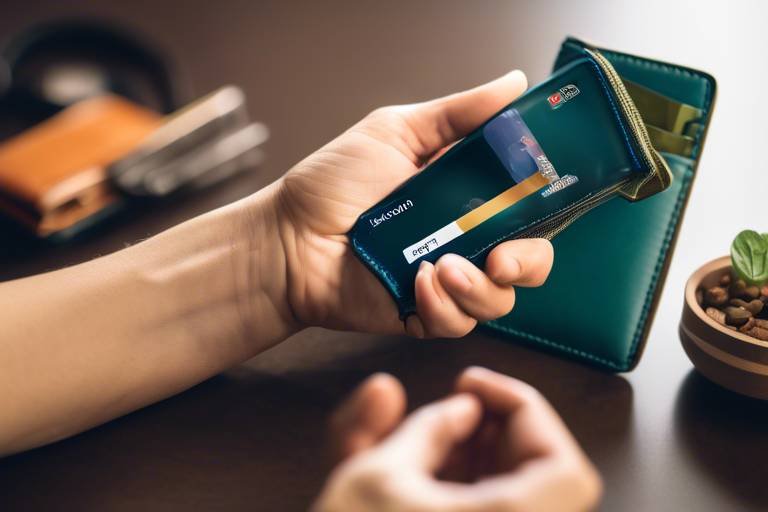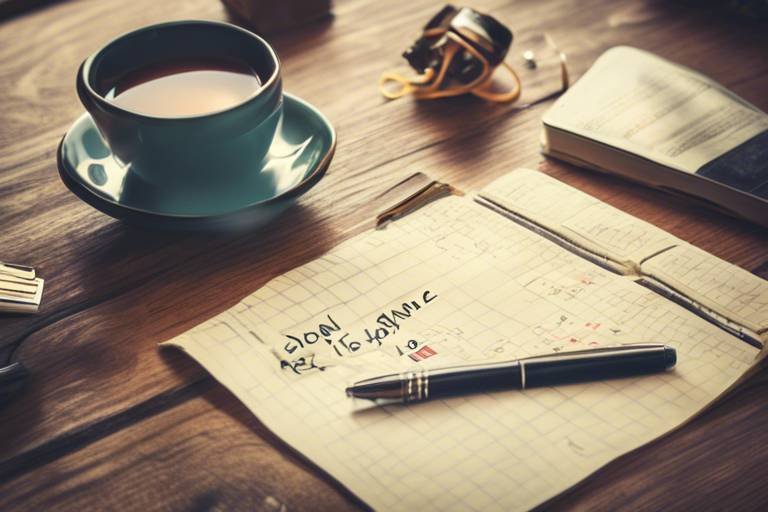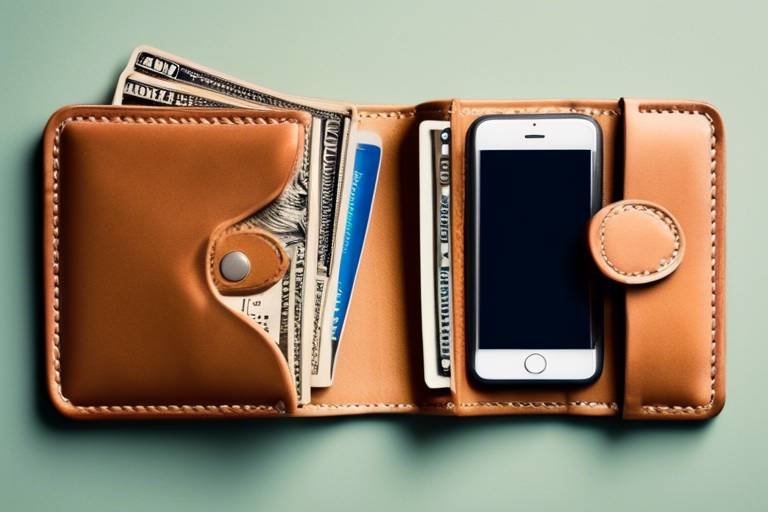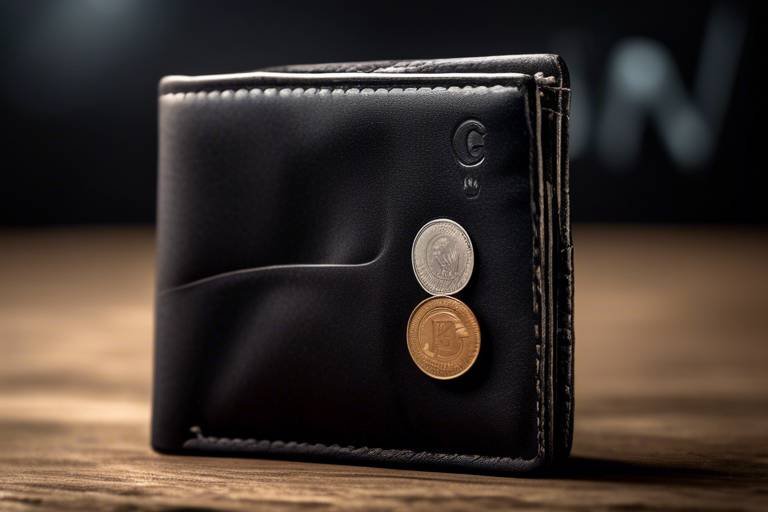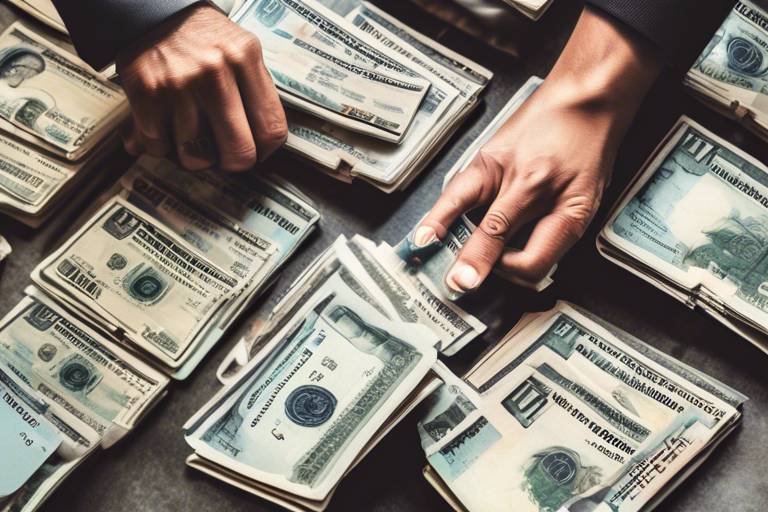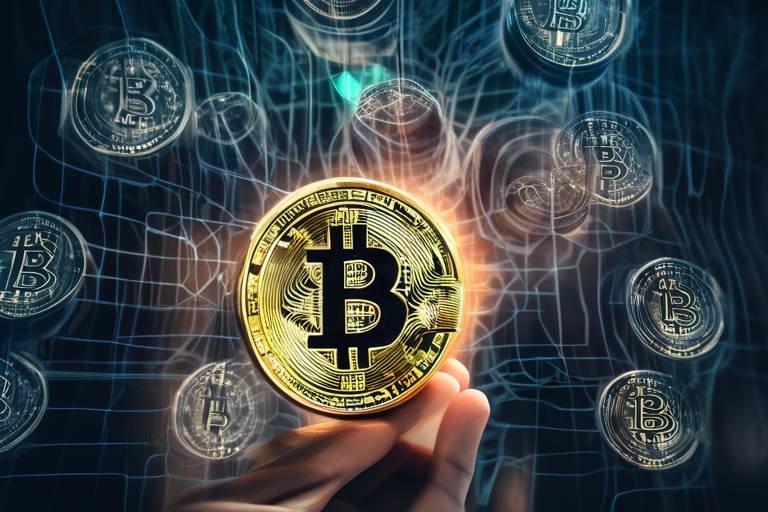The Role of Wallets in the Evolution of Money
Have you ever stopped to think about how wallets have transformed alongside money itself? From the humble beginnings of traditional leather pouches to the sleek digital applications we use today, wallets have played a crucial role in shaping our financial lives. They are not just simple storage solutions; they are reflections of our culture, personal identity, and even our social status. This article will take you on a journey through time, exploring the fascinating evolution of wallets and their significance in our everyday transactions.
Initially, wallets served a purely functional purpose: to carry coins and notes. As commerce evolved, so did the wallet. It became an essential accessory that mirrored the changes in currency, technology, and even fashion. Imagine a time when a simple leather pouch was the height of sophistication! Fast forward to today, and we find ourselves in an era where digital wallets are gaining ground, allowing us to make transactions with just a tap of our smartphones. This shift raises intriguing questions: How did we get here? What does the future hold for wallets and our financial interactions?
The journey of wallets is not just about materials and designs; it's also about the stories they tell. Each wallet carries with it a history, a personal narrative of its owner. Whether it's a worn-out leather wallet passed down through generations or a trendy fabric wallet purchased on a whim, these items are imbued with memories and experiences. They can evoke feelings of nostalgia, pride, and even aspiration. As we delve deeper into this topic, we'll uncover the historical significance of wallets and how they've evolved to meet our changing needs.
So, buckle up as we explore the intriguing world of wallets, tracing their journey from ancient times to the digital age. We'll examine traditional wallets, their craftsmanship, and the rise of digital wallets, all while highlighting the security features that have become essential in our increasingly online lives. By the end of this article, you’ll not only understand the evolution of wallets but also appreciate their role in our financial ecosystem.
Wallets have a rich history, evolving from simple storage solutions to essential accessories that reflect cultural values and personal identity throughout different eras. In ancient civilizations, wallets were often made of animal hides or woven materials, serving merely as containers for coins or trade goods. As societies progressed, so did the design and functionality of wallets.
Throughout history, wallets have been more than just practical items; they have also served as status symbols. In many cultures, the materials used to create a wallet, such as exotic leathers or intricate embroidery, could indicate wealth and social standing. This evolution shows how wallets have transcended their original purpose, becoming a canvas for personal expression and cultural significance.
From ancient coin purses to modern bifold and digital wallets, the evolution of wallets is a testament to human creativity and adaptability. Each type of wallet has emerged to serve unique functions, catering to the needs of its time. Let's dive into the various types of wallets that have made their mark throughout history.
Traditional wallets, often made from leather, have been used for centuries. These wallets are not just practical; they are also a reflection of craftsmanship and style. The materials, designs, and even the way they are worn have evolved, but their essence remains the same: to carry and protect our valuables.
Leather wallets are timeless accessories that combine durability and style. Their craftsmanship is often a work of art, with skilled artisans meticulously crafting each piece. This subsection explores their enduring popularity in different cultures, where they are often seen as a rite of passage or a gift symbolizing maturity.
With advancements in materials, fabric and synthetic wallets have gained popularity. They are lightweight, versatile, and come in a plethora of styles, making them appealing to a broader audience. This section looks at their benefits, including ease of maintenance and the ability to express individuality through vibrant designs.
Digital wallets have revolutionized how we conduct transactions, allowing users to store payment information securely. In a world where convenience is king, digital wallets offer an efficient way to manage finances. This section delves into their features, such as contactless payments and integration with various apps, highlighting their growing acceptance in our daily lives.
As financial transactions have become increasingly digital, security features in wallets have evolved. Protecting our financial information is paramount, and modern wallets come equipped with various protection measures. This section highlights advancements such as biometric authentication and encryption, ensuring our data remains secure.
Biometric security measures, such as fingerprint and facial recognition, enhance wallet security. These technologies are not just a trend; they are becoming standard in digital wallets. This subsection discusses their effectiveness and user adoption rates, emphasizing the peace of mind they provide to users.
Encryption technologies safeguard digital wallets from unauthorized access. By converting sensitive information into coded language, these technologies play a critical role in protecting users' financial information. This section explains how these technologies work and their importance in maintaining trust in digital transactions.
Wallets are not just functional items; they also carry cultural significance. They reflect personal style and societal norms across different cultures. This section examines how wallets have become symbols of identity, status, and self-expression in our globalized world.
In many cultures, wallets can signify wealth and status. Luxury brands have shaped perceptions of wallets as symbols of success, often becoming a staple in the wardrobes of the affluent. This subsection discusses how the design, brand, and even the materials used in wallets can convey messages about one's social standing.
Personalized wallets allow individuals to express their identity. From monograms to custom designs, this section explores trends in customization and how wallets serve as extensions of personal style. They are not just accessories; they are a canvas for self-expression.
- What is the oldest known type of wallet? The oldest wallets were simple pouches made from animal hides used to carry coins in ancient civilizations.
- How have digital wallets changed the way we shop? Digital wallets allow for quick and secure transactions, making shopping more convenient and efficient.
- Are leather wallets still popular today? Yes, leather wallets remain timeless and are often preferred for their durability and classic style.
- What security features should I look for in a digital wallet? Look for biometric security, encryption technologies, and two-factor authentication to ensure your information is safe.
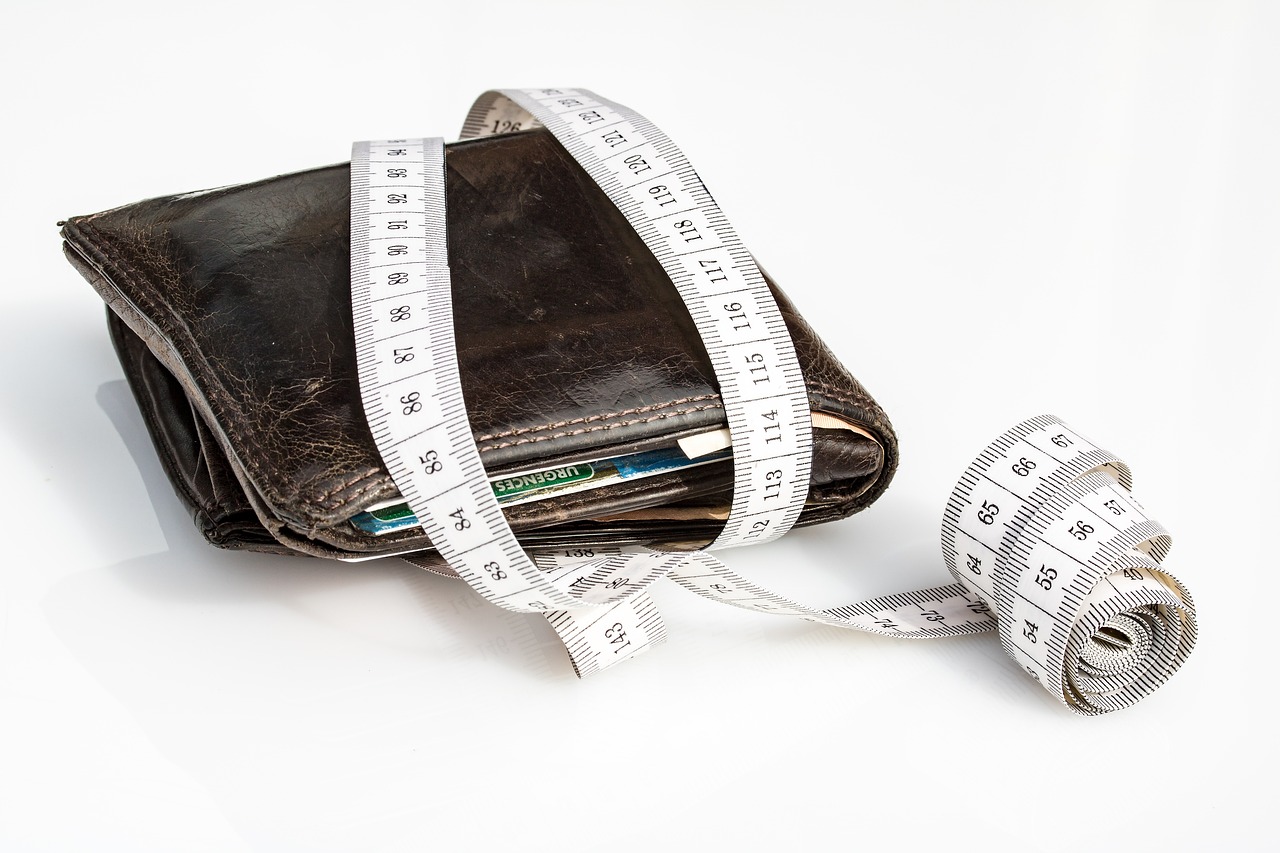
The Historical Significance of Wallets
When we think about wallets today, we often envision sleek designs and high-tech features, but the historical significance of wallets stretches far beyond their modern counterparts. Wallets have been integral to human civilization for centuries, serving not only as practical storage solutions but also as cultural artifacts that reflect the values and identities of their owners. From the ancient coin purses of our ancestors to the sophisticated leather bifolds we carry today, wallets have evolved in tandem with the concept of money itself.
In ancient times, people used simple pouches made from animal hides or woven materials to carry their coins and small valuables. These early wallets were not just functional; they were often adorned with intricate designs, showcasing the artistry and craftsmanship of the time. As trade and commerce expanded, the need for more sophisticated storage solutions became apparent. This led to the development of wallets that were not only practical but also a means of displaying wealth and status.
Throughout history, the design and materials used in wallets have varied significantly across cultures. For instance, in ancient Rome, citizens often carried small leather pouches known as loculi that were used to store coins and personal items. Meanwhile, in Asia, silk and brocade wallets became popular, reflecting the region's rich textile traditions. The evolution of wallets can be seen as a mirror of societal changes, where each design and material choice tells a story about the people who used them.
As we moved into the Middle Ages, wallets took on new forms, often resembling small bags that could be worn around the waist or hung from a belt. These wallets were practical for merchants and travelers, providing a secure way to carry money and important documents. With the advent of the Renaissance, wallets became more ornate, often embellished with embroidery or decorative clasps. This period marked a shift where wallets began to symbolize not just utility but also personal identity and artistic expression.
Fast forward to the 19th and 20th centuries, and we see the introduction of the bifold and trifold wallet styles that many of us use today. The industrial revolution brought about mass production, making wallets more accessible to the general public. They became a staple accessory for men and women alike, often used to carry not just money but also photographs, letters, and other personal items. The wallet transformed into a personal repository of memories and identity, reflecting the owner's life story.
Today, as we embrace digital wallets, the essence of what a wallet represents remains unchanged. It is still a personal space where we store not just our money, but our identity, values, and memories. The historical journey of wallets is a testament to human creativity and adaptation, highlighting how these simple accessories have continuously evolved while maintaining their core significance in our lives.
In summary, the historical significance of wallets is profound. They have evolved from basic storage solutions into sophisticated accessories that encapsulate our cultural values, personal identities, and societal norms. As we look to the future, it’s fascinating to consider how wallets will continue to transform alongside our ever-changing relationship with money.
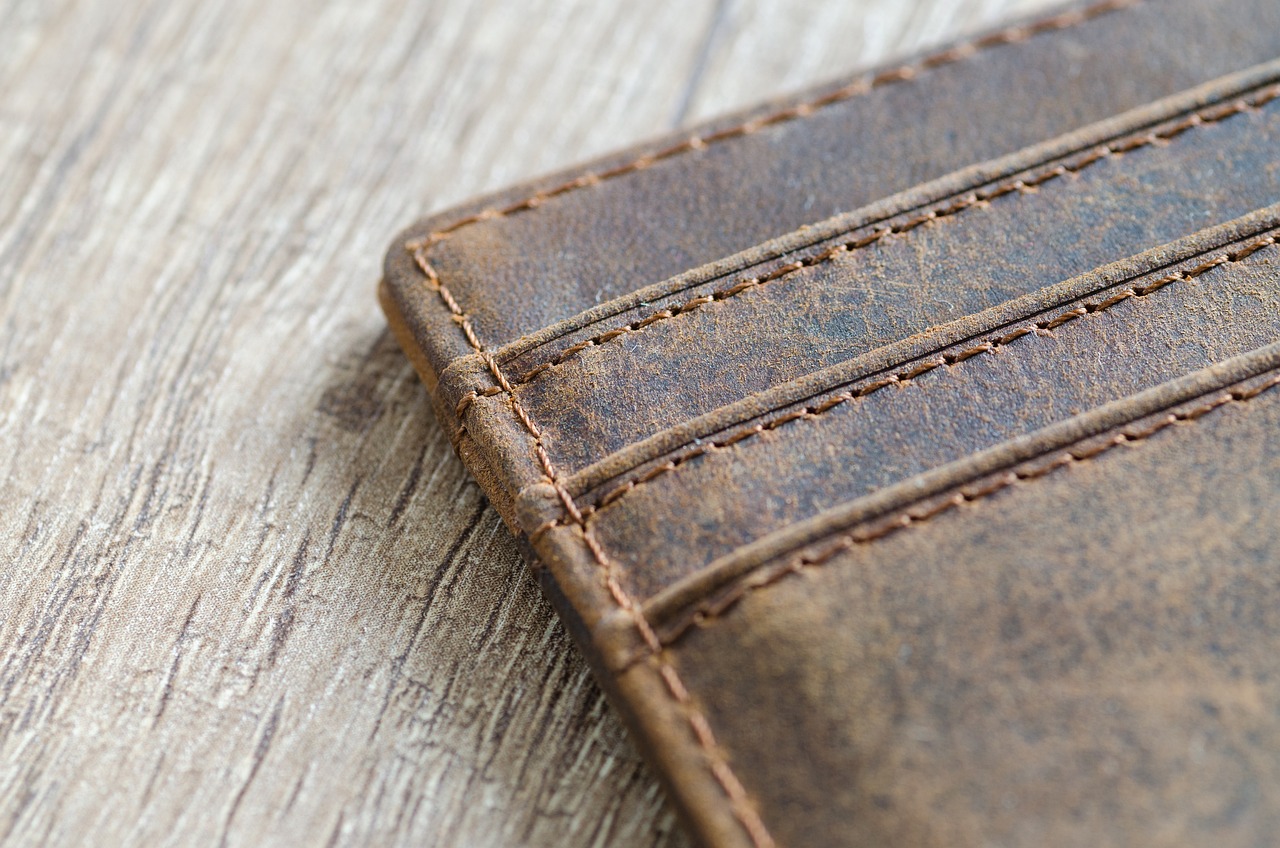
Types of Wallets Through the Ages
Throughout history, wallets have undergone a fascinating transformation, evolving from simple pouches used to hold coins to the sophisticated digital wallets we rely on today. Each type of wallet reflects the technological advancements and cultural shifts of its time, showcasing not only practicality but also personal identity. Let’s take a journey through the ages to explore the various types of wallets that have emerged, each serving unique functions and meeting the needs of their users.
In ancient times, wallets were primarily functional, often taking the form of coin purses made from materials like leather or fabric. These early wallets were designed for convenience, allowing individuals to carry their currency securely while they navigated bustling marketplaces. As societies progressed, so did the complexity and design of wallets. The introduction of new materials and manufacturing techniques allowed for a wider variety of styles and functionalities.
Fast forward to the medieval period, and we see the emergence of more sophisticated wallets. Leather wallets became increasingly popular, not only for their durability but also for their aesthetic appeal. Craftsmen began to produce wallets with intricate designs, reflecting the artistry of the time. These wallets were often worn as accessories, showcasing the owner’s wealth and status. In fact, many wallets from this era featured ornate embellishments, making them not just practical items but also symbols of prestige.
As we moved into the 20th century, the wallet continued to evolve. The introduction of bifold and trifold wallets provided users with more organization options, allowing them to store not just cash but also cards and identification. This period marked a significant shift in wallet design, as functionality became just as important as style. The materials used also diversified, with fabric and synthetic options gaining traction due to their lightweight nature and variety of colors and patterns.
Today, we find ourselves in the digital age, where digital wallets have revolutionized the way we conduct transactions. No longer are we limited to physical currency. Instead, we can store payment information, loyalty cards, and even tickets all in one convenient application on our smartphones. This shift not only enhances convenience but also reflects a broader trend towards a cashless society. Digital wallets are now embraced by millions, offering features like instant transfers and contactless payments that were once unimaginable.
To summarize, the evolution of wallets reflects significant changes in technology, culture, and individual identity. From ancient coin purses to modern digital solutions, each type of wallet has played a vital role in shaping how we manage our finances. As we continue to innovate and adapt, who knows what the future holds for wallets? Perhaps we will see even more integration with technology, making our financial lives more seamless than ever before.
- What are the main types of wallets available today? Today, wallets can be categorized into traditional wallets (like leather and fabric), digital wallets (like Apple Pay and Google Wallet), and specialized wallets (like cryptocurrency wallets).
- How do digital wallets work? Digital wallets store payment information securely and allow users to make transactions online or in-store using their smartphones or other devices.
- Are leather wallets still popular? Yes, leather wallets remain a classic choice due to their durability and timeless style, appealing to many individuals who value craftsmanship.
- What security features should I look for in a digital wallet? Look for features such as biometric authentication, encryption technologies, and two-factor authentication to ensure your financial information is protected.

Traditional Wallets
Traditional wallets have a fascinating history, serving not just as practical items for storing money and cards, but as reflections of cultural values and personal identity. These wallets, often crafted from leather, have been a staple in everyday life for centuries. Imagine walking down a bustling street in the 18th century, where men and women alike would pull out their finely crafted leather wallets to pay for goods, showcasing not only their wealth but also their taste. The craftsmanship involved in creating these wallets was meticulous, with artisans often taking great pride in their work.
Leather wallets typically come in various designs, from the classic bifold to the more modern trifold. Each style serves a unique purpose, catering to different needs and preferences. For example, bifold wallets are favored for their slim profile, making them easy to carry, while trifold wallets offer more storage space. The choice of wallet often reflects the owner's lifestyle—busy professionals might prefer a minimalist design, while others may opt for wallets with numerous compartments for organization.
Throughout history, the materials used in traditional wallets have evolved. While leather remains the most popular choice due to its durability and timeless appeal, other materials like fabric and synthetic fibers have also made their way into the market. These alternatives offer a range of styles and colors, appealing to a younger audience or those seeking something different. However, the classic leather wallet continues to hold its ground, often viewed as a status symbol and a sign of sophistication.
Furthermore, traditional wallets are not just about storing cash and cards. They often carry sentimental value, holding cherished photos, love notes, or even mementos from significant life events. This emotional connection adds another layer to the wallet's significance, transforming it from a mere accessory into a personal keepsake. In many cultures, gifting a wallet can symbolize good fortune, making it a thoughtful present that transcends mere functionality.
As we delve deeper into the world of wallets, it’s essential to recognize their role in our financial lives. They are not just tools for transactions but are intertwined with our identities and social interactions. Whether you prefer the classic leather bifold or a trendy fabric wallet, each choice tells a story about who you are and how you navigate the world of finance.
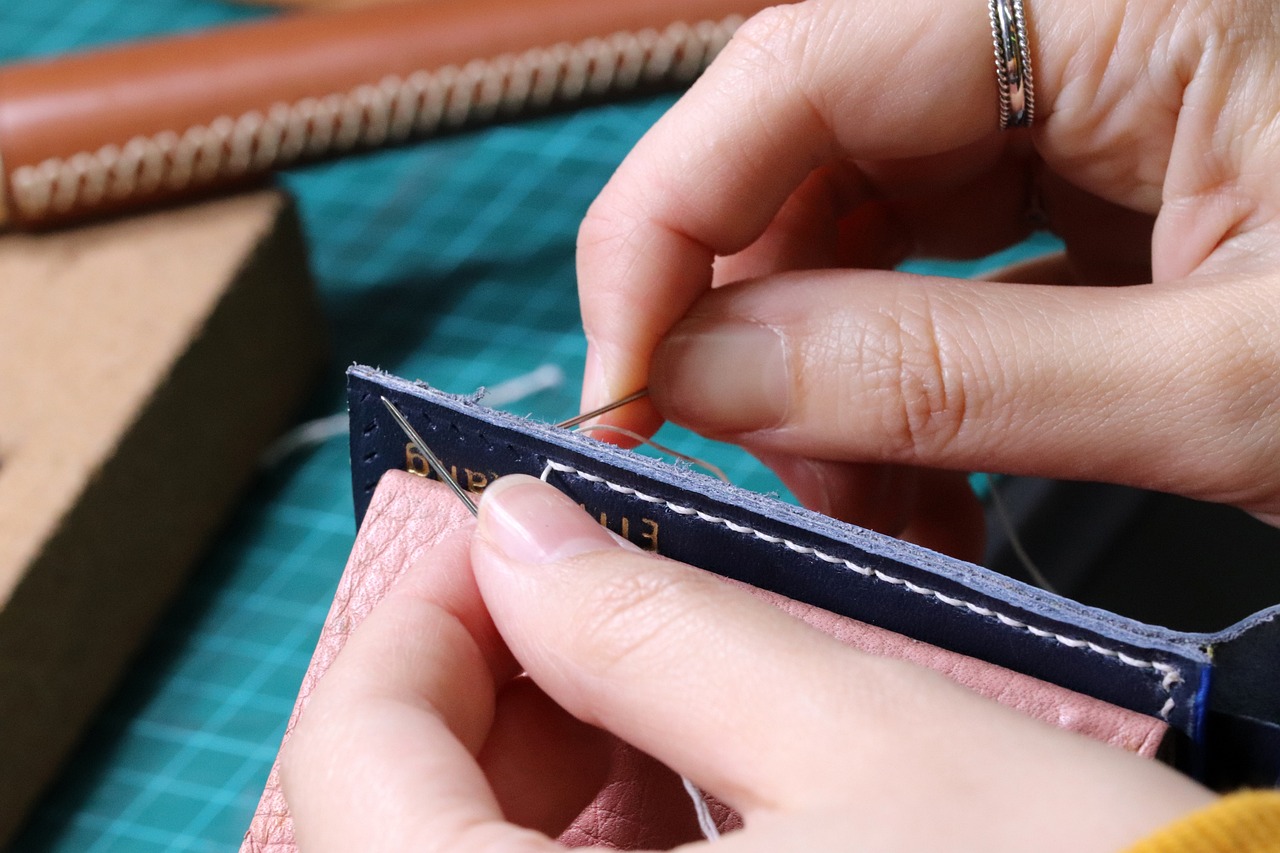
Leather Wallets
When you think of a wallet, the image of a classic leather wallet often comes to mind. These timeless accessories have been a staple in our lives for centuries, and their enduring appeal is no accident. Leather wallets are not just about utility; they embody a sense of craftsmanship and style that resonates across generations. The rich texture, the smell of genuine leather, and the way they age gracefully are aspects that many people cherish.
Crafted from high-quality materials, leather wallets are designed to withstand the test of time. They come in various styles, including bifold, trifold, and even minimalist designs, catering to different preferences and needs. Each type serves its purpose, from holding cash and cards to providing a compact solution for the on-the-go individual. But what really sets leather wallets apart is their ability to tell a story. Each crease and mark adds character, reflecting the adventures of their owner.
One of the most appealing aspects of leather wallets is their versatility. They can be dressed up or down, making them suitable for any occasion. Whether you're heading to a formal event or just running errands, a leather wallet can complement your outfit perfectly. Additionally, many brands offer a range of colors and finishes, allowing you to choose one that aligns with your personal style.
Let’s not forget about the craftsmanship involved in creating these wallets. High-quality leather wallets are often handmade, with artisans paying meticulous attention to detail. This dedication to quality is what differentiates a premium leather wallet from a mass-produced alternative. The stitching, the lining, and even the choice of leather type—such as full-grain or top-grain—play a significant role in determining the wallet's durability and aesthetic appeal.
Furthermore, leather wallets have cultural significance as well. In many societies, they are seen as a rite of passage, often gifted during significant life events such as graduations or promotions. This adds a sentimental value that goes beyond mere functionality. Owning a leather wallet can symbolize maturity, responsibility, and a certain level of sophistication.
In conclusion, leather wallets are more than just storage solutions; they are a blend of art, culture, and personal expression. Whether you prefer a classic bifold or a sleek minimalist design, investing in a quality leather wallet is a decision that pays off in the long run. Not only do they provide practicality, but they also carry a legacy that can be passed down through generations, making them a truly special accessory.
- How do I care for my leather wallet? Regularly clean it with a soft cloth and apply a leather conditioner to maintain its luster.
- Can leather wallets be waterproofed? While most leather wallets are not inherently waterproof, you can apply a waterproofing spray to protect them from moisture.
- What types of leather are used in wallets? Common types include full-grain, top-grain, and genuine leather, each varying in quality and price.
- Are leather wallets worth the investment? Yes, high-quality leather wallets can last for years, making them a worthwhile investment.
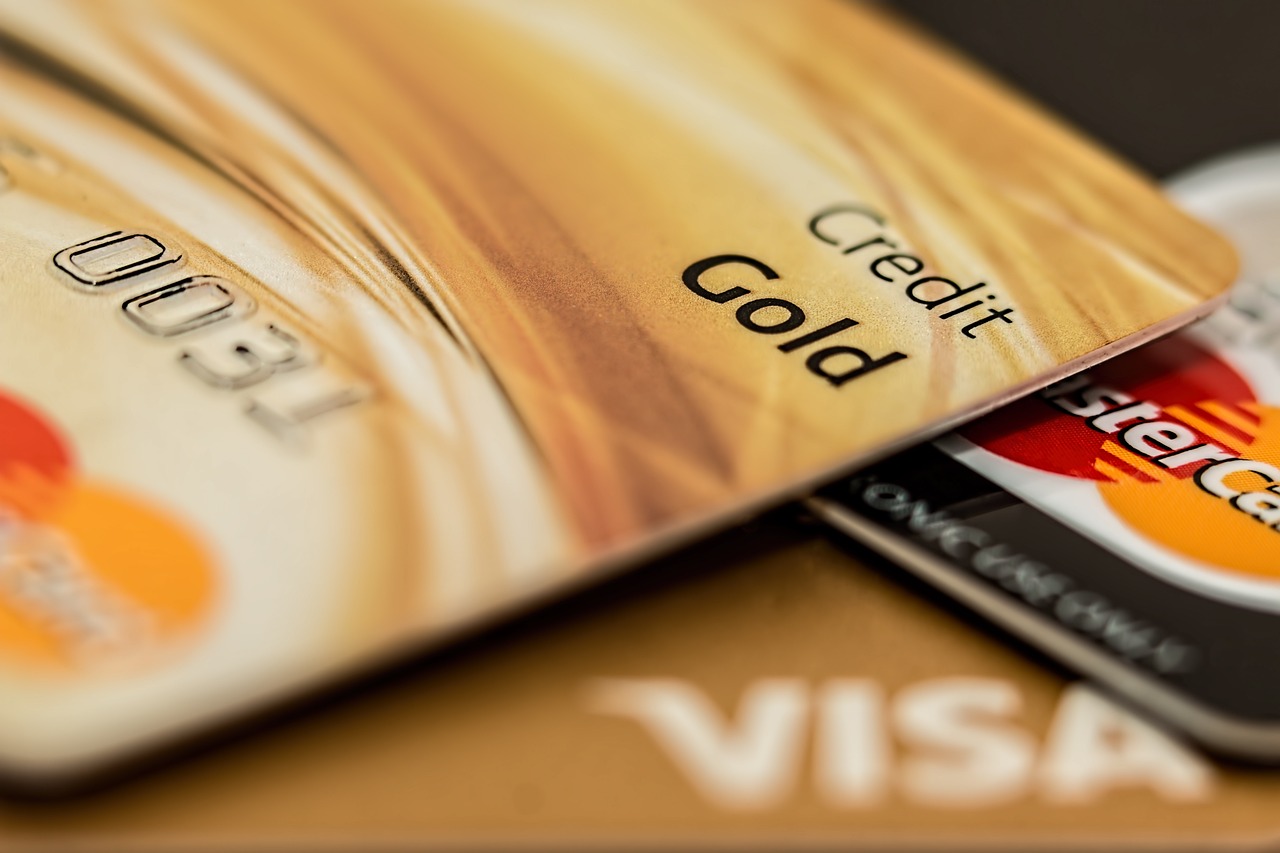
Fabric and Synthetic Wallets
As we glide through the modern age, have emerged as popular alternatives to their traditional leather counterparts. These wallets are not just about style; they represent a shift in consumer preferences towards practicality and sustainability. Imagine walking into a store and being greeted by a vibrant array of colors and designs, all crafted from materials that are both lightweight and durable. This transformation has made wallets more accessible to a broader audience, catering to diverse tastes and lifestyles.
One of the most appealing aspects of fabric and synthetic wallets is their versatility. They come in a variety of materials, such as nylon, polyester, and even recycled plastics. These materials allow for a range of styles, from sleek minimalist designs to bold, eye-catching patterns. For instance, a nylon wallet might be perfect for a day out hiking, offering both durability and resistance to the elements, while a synthetic leather wallet can add a touch of elegance to a night out. The options are practically endless!
In terms of functionality, these wallets often feature multiple compartments, making it easier to organize cards, cash, and coins. Many fabric wallets also include RFID-blocking technology, which protects your sensitive information from electronic pickpocketing. This combination of style and security makes fabric and synthetic wallets a smart choice for the modern consumer.
Moreover, the rise of eco-consciousness among consumers has further fueled the popularity of synthetic wallets. Many brands are now focusing on sustainability, using recycled materials and ethical production practices. This means that when you choose a synthetic wallet, you’re not just making a fashion statement; you’re also making a statement about your values. It’s like wearing your beliefs on your sleeve—literally!
To give you a clearer picture, here’s a quick comparison table highlighting the key features of traditional leather wallets versus fabric and synthetic wallets:
| Feature | Leather Wallets | Fabric/Synthetic Wallets |
|---|---|---|
| Durability | High | Medium to High |
| Weight | Heavy | Lightweight |
| Style Variety | Classic | Vast |
| Price Range | Higher | Lower to Medium |
| Sustainability | Variable | Often Eco-friendly |
In conclusion, fabric and synthetic wallets have carved out a significant niche in the wallet market. They are not only practical and stylish but also align with a growing demand for sustainable products. As we continue to embrace innovation, it’s clear that these wallets will play an essential role in the evolution of how we carry and manage our money.
- Are fabric wallets as durable as leather wallets? - While leather is traditionally known for its durability, many high-quality fabric wallets are designed to withstand wear and tear, making them a viable option for everyday use.
- Can synthetic wallets be eco-friendly? - Yes! Many brands produce synthetic wallets using recycled materials and sustainable practices, allowing consumers to make environmentally conscious choices.
- What features should I look for in a fabric wallet? - Look for features like RFID-blocking technology, multiple compartments for organization, and materials that suit your style and lifestyle.
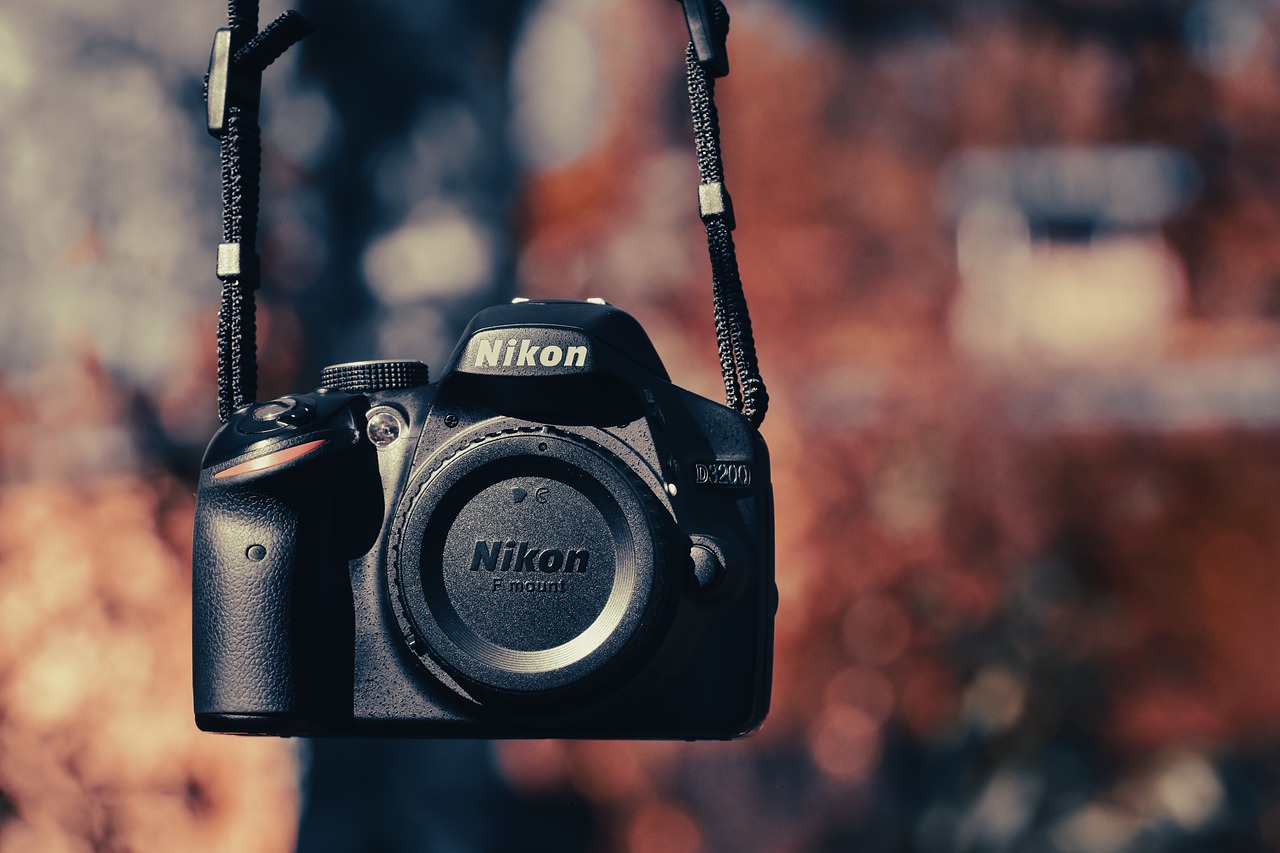
Digital Wallets: The Future of Transactions
In today's fast-paced world, digital wallets have emerged as a game-changer in how we handle transactions. Gone are the days when we had to carry cash or search for our physical cards in a cluttered wallet. Now, with just a few taps on our smartphones, we can make purchases, transfer money, and even manage our finances. But what exactly makes digital wallets the future of transactions?
First off, let's talk about convenience. Imagine walking into a store, grabbing what you need, and simply scanning your phone at the checkout. Digital wallets like Apple Pay, Google Wallet, and Samsung Pay allow users to store multiple payment methods securely, eliminating the need for physical cards. This not only speeds up the checkout process but also reduces the risk of losing your wallet or having your cards stolen.
Another significant advantage of digital wallets is their security features. Many digital wallets employ advanced security measures, including encryption and two-factor authentication, ensuring that your financial information is kept safe from prying eyes. For instance, when you make a transaction, your actual card number isn't shared with the merchant; instead, a unique token is generated for that specific transaction. This adds an extra layer of protection, making digital wallets a safer alternative to traditional wallets.
Furthermore, digital wallets are not just about making payments; they can also serve as comprehensive financial tools. Many apps offer features such as expense tracking, budgeting tools, and rewards programs, allowing users to manage their finances more effectively. You can see where your money is going and even earn cash back on your purchases, making every transaction a little more rewarding.
As we move further into the digital age, the acceptance of digital wallets is growing exponentially. According to recent studies, the number of users is expected to reach over 1.3 billion by 2025. This shift is not just limited to consumers; businesses are also adapting to this trend. Many retailers are investing in technology to accept digital payments, recognizing that offering multiple payment options can enhance customer experience and drive sales.
In summary, digital wallets are revolutionizing the way we think about transactions. With their convenience, security, and added financial management features, they are paving the way for a cashless society. As technology continues to evolve, we can expect digital wallets to become even more integrated into our daily lives, making them an essential tool for anyone looking to streamline their financial transactions.
- What is a digital wallet? A digital wallet is an application or software that stores payment information and passwords for numerous payment methods and websites.
- Are digital wallets safe? Yes, digital wallets utilize encryption and security protocols to protect your financial information.
- Can I use a digital wallet internationally? Many digital wallets can be used internationally, but it’s essential to check if the merchant accepts your specific wallet.
- How do I set up a digital wallet? Setting up a digital wallet typically involves downloading the app, linking your payment methods, and following the on-screen instructions to verify your identity.

Security Features of Modern Wallets
As we dive deeper into the digital age, the security features of modern wallets have become more critical than ever. With the rise of online transactions and digital payments, users are increasingly concerned about the safety of their financial information. This has led to a surge in innovative security measures designed to protect users from fraud and unauthorized access. In this section, we will explore the various protection measures that have emerged, including biometric authentication and encryption technologies, which are pivotal in safeguarding our financial data.
To begin with, let's talk about biometric security. This technology has gained immense popularity in recent years, primarily due to its effectiveness in enhancing security protocols. Biometric authentication methods, such as fingerprint scanning and facial recognition, provide a unique way to verify a user's identity. Unlike traditional passwords, which can be forgotten or stolen, biometric data is inherently tied to the individual, making it a robust line of defense. For instance, many smartphones now allow users to unlock their devices and authorize transactions simply by using their fingerprints. This seamless integration of biometric technology into wallets not only improves security but also adds a layer of convenience that users appreciate.
Moreover, the adoption rates of biometric security measures are climbing. According to a recent study, over 60% of consumers prefer using biometric features over traditional PINs for their transactions. This statistic underscores the growing trust in biometric systems and their potential to become the standard for secure transactions. However, while biometric security is a significant advancement, it is not without its challenges. Issues such as false rejections or the inability to recognize users in certain conditions can sometimes hinder its effectiveness. Nevertheless, ongoing advancements in technology continue to improve these systems, making them more reliable and user-friendly.
Next, we have encryption technologies, which play a crucial role in protecting digital wallets from unauthorized access. Encryption is the process of converting information into a code to prevent unauthorized access. When you store your payment information in a digital wallet, it is encrypted, ensuring that even if someone were to intercept the data, they would not be able to read it without the decryption key. This technology acts as a shield, safeguarding sensitive information like credit card numbers and personal identification.
There are various types of encryption methods, including symmetric and asymmetric encryption, each with its unique features and applications. For example, symmetric encryption uses the same key for both encryption and decryption, making it faster but potentially less secure if the key is compromised. On the other hand, asymmetric encryption uses a pair of keys—one public and one private—adding an extra layer of security. This method is often employed in digital wallets to ensure that even if the public key is exposed, the private key remains secure.
| Encryption Type | Description | Use Case |
|---|---|---|
| Symmetric Encryption | Uses the same key for encryption and decryption. | Fast transactions, less secure for sensitive data. |
| Asymmetric Encryption | Uses a pair of keys (public and private). | Secure transactions, commonly used in digital wallets. |
In conclusion, as we continue to embrace the digital revolution, the security features of modern wallets are evolving to meet the demands of an increasingly tech-savvy society. Biometric security and encryption technologies are at the forefront of this evolution, providing users with enhanced protection and peace of mind. As these technologies advance, we can expect even greater innovations in wallet security, ensuring that our financial transactions remain safe and secure in the digital landscape.
- What is biometric security? Biometric security uses unique physical characteristics, such as fingerprints or facial recognition, to verify a user's identity.
- How does encryption protect my data? Encryption converts your data into a code, making it unreadable to anyone who does not have the key to decrypt it.
- Are digital wallets safe to use? Yes, when equipped with the latest security features like biometric authentication and encryption, digital wallets are considered safe for transactions.

Biometric Security
In today's fast-paced digital world, where our financial transactions are increasingly conducted online, the need for robust security measures has never been more critical. has emerged as a cutting-edge solution that enhances the safety of digital wallets, making it nearly impossible for unauthorized users to access sensitive information. But what exactly does biometric security entail? Simply put, it involves the use of unique biological traits—like fingerprints, facial recognition, or even voice patterns—to authenticate users. This technology offers a level of security that traditional passwords simply cannot match.
One of the most significant advantages of biometric security is its convenience. Imagine you’re at the store, ready to make a purchase. Instead of fumbling through your wallet for your card or typing in a password, you simply place your finger on a sensor or glance at your phone. Voila! The transaction is completed in seconds. This seamless integration not only enhances the user experience but also reduces the chances of fraud. After all, it’s much harder for someone to replicate your fingerprint or face than it is to guess a password.
However, it’s essential to recognize that while biometric security is a powerful tool, it is not infallible. Just like any other technology, it has its vulnerabilities. For instance, sophisticated hackers have developed methods to spoof biometric systems, leading to concerns about privacy and security. As a result, many digital wallet providers are implementing multi-factor authentication, combining biometric data with other security measures, such as PINs or one-time passwords, to create a more comprehensive defense against potential threats.
Moreover, the adoption of biometric security is on the rise. According to recent studies, a significant percentage of consumers express a preference for biometric authentication over traditional methods. Why? Because it’s not just about security; it’s about trust. When users feel confident that their financial information is protected, they are more likely to engage in digital transactions. This trust is crucial for the continued growth of digital wallets and the broader financial ecosystem.
In conclusion, biometric security is revolutionizing the way we think about digital transactions. It combines convenience with a high level of security, making it an attractive option for both consumers and businesses. As technology continues to evolve, we can expect to see even more sophisticated biometric solutions that will further enhance our financial security. The future of wallets is not just about carrying cash or cards; it’s about carrying peace of mind.
- What is biometric security? Biometric security uses unique biological traits, like fingerprints or facial recognition, to authenticate users and protect their information.
- How does biometric security improve wallet safety? It provides a higher level of security compared to traditional passwords, making unauthorized access much more difficult.
- Are there any vulnerabilities in biometric security? Yes, while biometric systems are generally secure, they can be spoofed, which is why multi-factor authentication is often recommended.
- Why do consumers prefer biometric security? Many consumers find it more convenient and trustworthy than traditional password methods, leading to increased engagement in digital transactions.
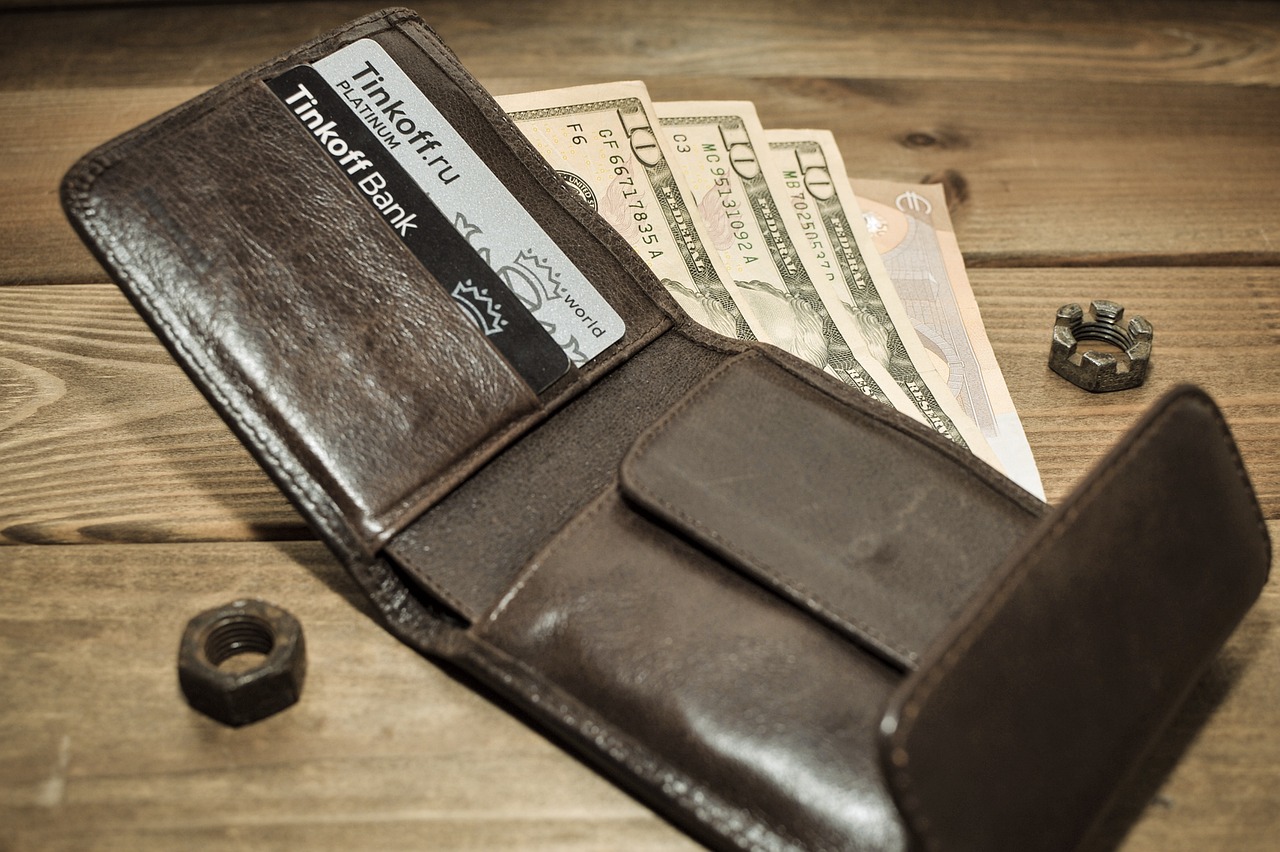
Encryption Technologies
In today's fast-paced digital world, the importance of in protecting our financial information cannot be overstated. As we increasingly rely on digital wallets for our transactions, understanding how these technologies work is key to ensuring our data remains safe from prying eyes. At its core, encryption is a method of converting information into a code to prevent unauthorized access. Think of it as a secret language that only you and your wallet can understand!
There are several types of encryption methods used in digital wallets, each with its unique mechanisms and advantages. For instance, symmetrical encryption uses the same key for both encryption and decryption, making it fast and efficient for processing transactions. On the other hand, asymmetrical encryption employs a pair of keys – a public key for encryption and a private key for decryption. This dual-key system adds an extra layer of security, ensuring that even if someone intercepts the public key, they cannot access your sensitive information without the private key.
Moreover, the implementation of is not just about securing transactions; it's also about building trust. Users need to feel confident that their personal data, such as credit card numbers and bank details, are protected. For example, many digital wallets utilize Secure Socket Layer (SSL) protocols, which encrypt data transmitted over the internet, making it nearly impossible for hackers to decipher. This technology acts like a secure tunnel, allowing information to flow safely between your device and the wallet's servers.
As the landscape of financial transactions continues to evolve, so do the methods of encryption. Here are some key features to look for in modern encryption technologies:
- End-to-End Encryption: Ensures that only the sender and receiver can access the data.
- Two-Factor Authentication (2FA): Adds an extra layer of security by requiring a second form of verification.
- Regular Security Updates: Keeps the encryption protocols up-to-date against emerging threats.
In conclusion, encryption technologies play a pivotal role in safeguarding our digital wallets and, by extension, our financial lives. They not only protect our sensitive information but also foster a sense of security and trust in the digital ecosystem. As we continue to embrace digital transactions, understanding and prioritizing these technologies will be essential for anyone looking to navigate the financial landscape safely.
Q: What is encryption?
A: Encryption is the process of converting information into a code to prevent unauthorized access.
Q: Why is encryption important for digital wallets?
A: Encryption protects sensitive financial information from hackers and unauthorized access, ensuring secure transactions.
Q: What are the common types of encryption used in digital wallets?
A: The most common types are symmetrical encryption and asymmetrical encryption, each serving different security needs.
Q: How can I ensure my digital wallet is secure?
A: Look for features like end-to-end encryption, two-factor authentication, and regular security updates from your wallet provider.
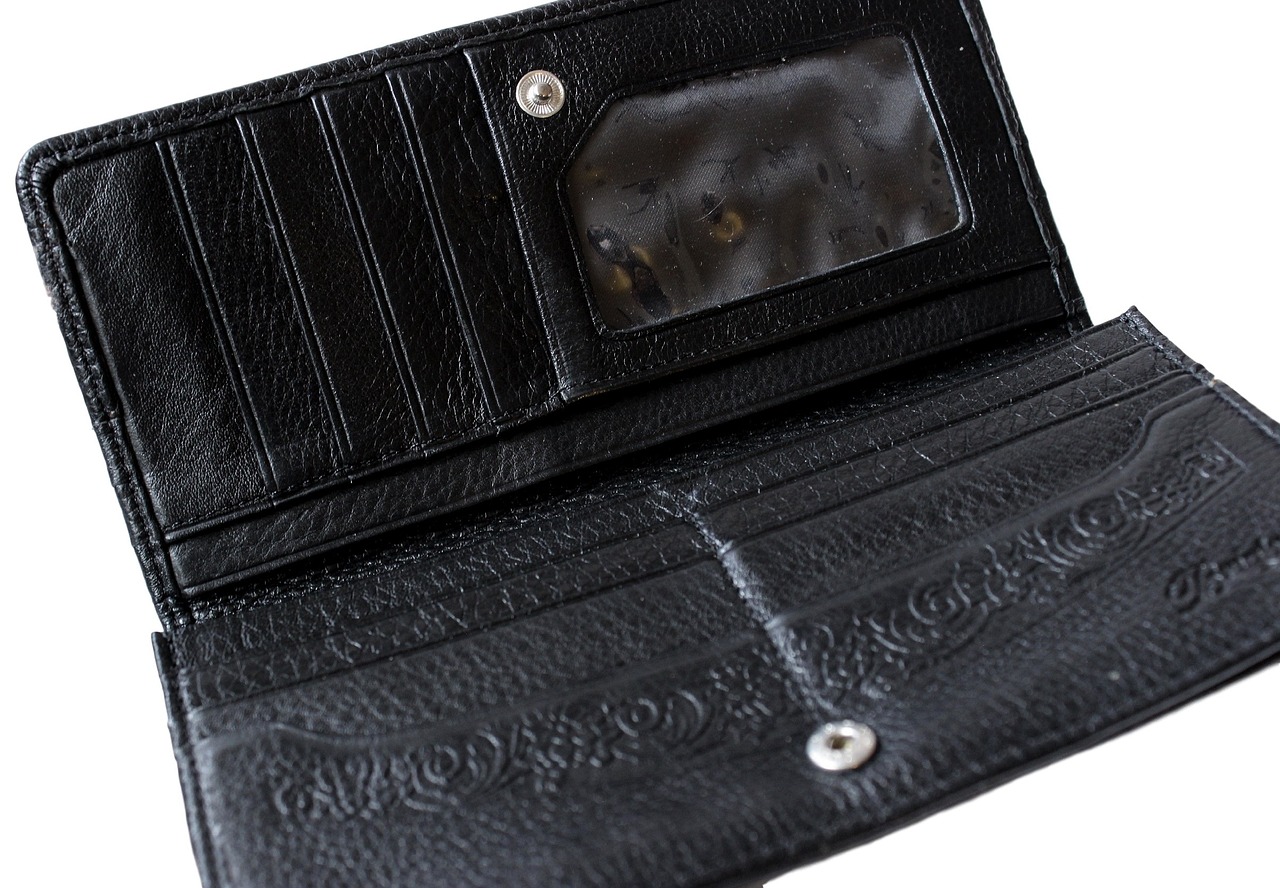
The Cultural Impact of Wallets
Wallets are not just mere storage devices for cash and cards; they are cultural artifacts that reflect personal style, societal norms, and even economic status. In various cultures around the world, the type of wallet one carries can speak volumes about their identity and values. For instance, in some societies, a wallet may symbolize wealth and success, while in others, it may be a representation of practicality and minimalism.
Take a moment to think about it: when you see someone pull out a sleek, designer wallet, what do you immediately assume? It’s likely that you associate it with affluence and a certain lifestyle. This perception is not unfounded; luxury brands have cleverly marketed wallets as status symbols, often elevating them beyond their functional purpose. In fact, many high-end wallets come with hefty price tags, not just for the materials used but for the brand prestige they carry. This phenomenon has created a culture where wallets are often seen as an extension of one’s social standing.
Moreover, personalization has become a significant trend in the world of wallets. Many people opt for customized wallets that feature their initials, favorite colors, or even unique designs that resonate with their personality. This trend highlights how wallets serve as extensions of personal identity. A wallet can tell a story about who you are and what you value. Whether it’s a vibrant fabric wallet adorned with artistic patterns or a classic leather bifold that exudes sophistication, the choices people make reflect their individual tastes and life experiences.
In many cultures, the act of gifting a wallet carries its own significance. For example, in some Asian cultures, gifting a wallet is seen as a way to wish someone prosperity and financial success. However, it is essential to present it with cash inside, as this is believed to bring good luck and wealth to the recipient. This cultural nuance emphasizes how wallets transcend their practical use, becoming symbols of hope, aspiration, and connection between people.
As we navigate through different cultural landscapes, the evolution of wallets continues to intertwine with our social fabric. Whether it’s a traditional leather wallet passed down through generations or a cutting-edge digital wallet designed for tech-savvy users, the cultural impact of wallets is undeniable. They are mirrors reflecting our values, aspirations, and identities in an ever-changing world.
- What materials are commonly used in wallets today?
Wallets are made from a variety of materials, including leather, fabric, synthetic materials, and even metal. - Are digital wallets secure?
Yes, many digital wallets utilize advanced security features like encryption and biometric authentication to protect user information. - How can I personalize my wallet?
Many brands offer customization options, allowing you to add initials or choose colors and designs that reflect your personal style. - What is the significance of gifting a wallet?
In some cultures, gifting a wallet symbolizes a wish for prosperity and success, often accompanied by a small amount of cash for good luck.
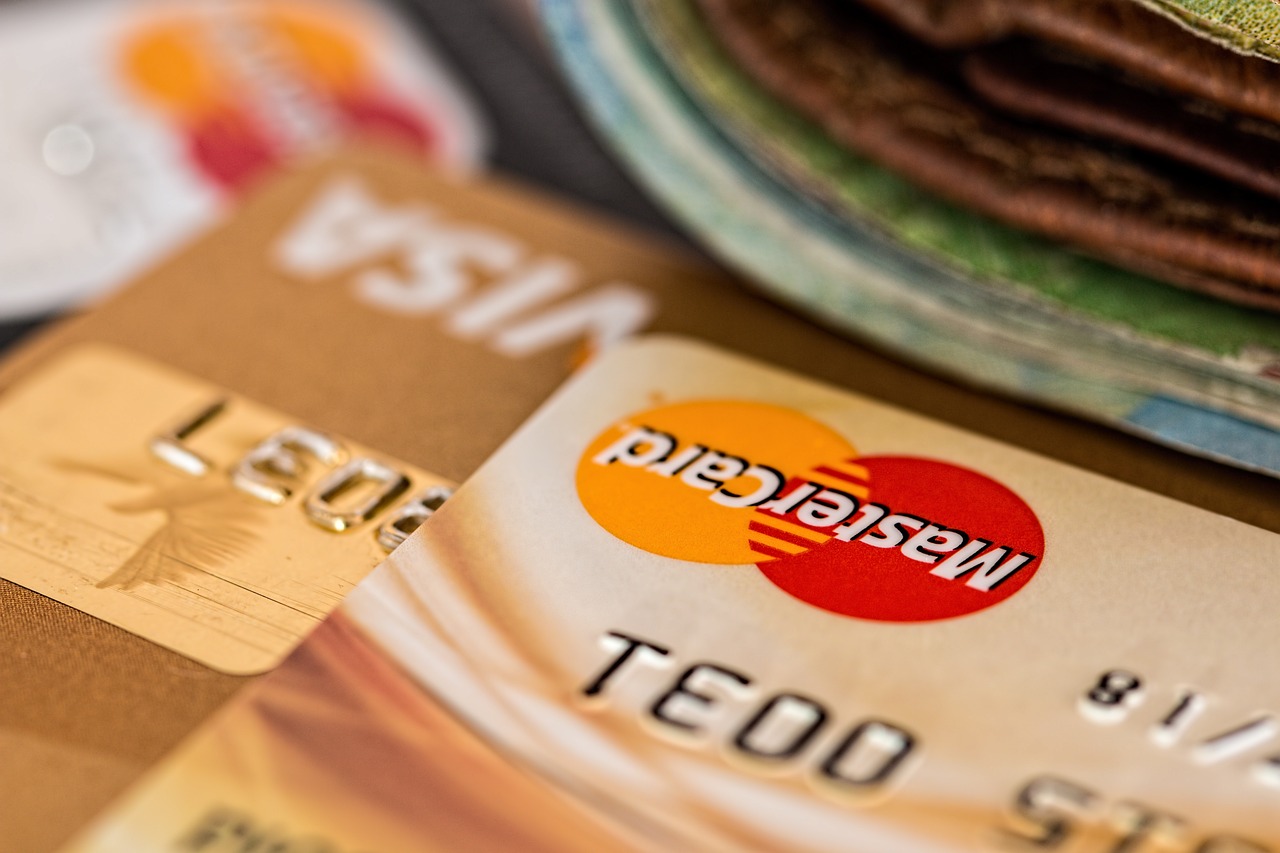
Wallets as Status Symbols
In many cultures, wallets transcend their basic function of merely holding cash and cards; they morph into status symbols that reflect wealth, personal style, and social standing. Just think about it—when you see someone pull out a designer wallet, what do you immediately think? It’s often associated with success and affluence. This phenomenon isn’t just a modern trend; it has roots that stretch back through history. In earlier times, the materials and craftsmanship of wallets were indicative of one’s economic status. For instance, a simple leather pouch might have belonged to a commoner, while a finely crafted wallet adorned with precious metals and intricate designs would be the pride of a noble.
Luxury brands have played a pivotal role in shaping the perception of wallets as symbols of success. Brands like Louis Vuitton, Gucci, and Prada don’t just sell wallets; they sell a lifestyle. Owning one of these wallets is often seen as a rite of passage into a more affluent social circle. The price tags attached to these wallets can be staggering, but for many, the investment is worth it because it signifies not just wealth, but also a sense of belonging to an exclusive club. The allure of these high-end wallets is further amplified by celebrity endorsements and social media influencers flaunting them, making them even more desirable.
Moreover, the symbolism of wallets extends beyond mere monetary value. They often carry personal stories, memories, and achievements. A wallet passed down through generations can symbolize family heritage and values, while a customized wallet can showcase individual identity and style. As people seek to express their uniqueness, many opt for personalized wallets that reflect their tastes, interests, and even aspirations. This trend towards personalization has made wallets not just functional items, but also a canvas for self-expression.
In conclusion, wallets as status symbols are a fascinating blend of culture, identity, and economics. They encapsulate the journey of personal finance, where the simple act of carrying money transforms into a statement of who we are and where we belong. As we continue to evolve in our financial habits, the significance of wallets will likely grow, serving as a mirror reflecting our societal values and personal journeys.
- What makes a wallet a status symbol? A wallet becomes a status symbol primarily through its brand, material, and craftsmanship. Luxury brands often elevate wallets to status symbols due to their high price and exclusivity.
- Are personalized wallets considered status symbols? Yes, personalized wallets can also be considered status symbols as they reflect individual identity and style, showcasing personal taste and uniqueness.
- How do cultural perceptions influence wallet status? Cultural perceptions can significantly influence how wallets are viewed as status symbols. In some cultures, the brand and material of a wallet may carry more weight than in others.

Personalization and Identity
In today's world, wallets have transcended their basic function of holding cash and cards; they have become a canvas for personal expression. Many people view their wallets as an extension of their identity, showcasing their personality and style to the world. Just think about it: when you pull out your wallet at a café or during a transaction, it’s not just a practical move; it’s a statement about who you are. Personalization has become a significant trend, allowing individuals to customize their wallets in ways that resonate with their unique tastes.
From monograms to unique color schemes, the options for customizing wallets are nearly endless. Some brands offer the ability to engrave initials or names, while others allow for a selection of materials, patterns, and even the shape of the wallet itself. This level of customization not only enhances the aesthetic appeal but also creates a sense of ownership and pride. After all, who wouldn’t want a wallet that reflects their individuality?
Moreover, personalized wallets can carry sentimental value. Many people opt for designs that commemorate special occasions, such as anniversaries or graduations. For instance, a wallet adorned with a significant date or a heartfelt message can serve as a daily reminder of cherished memories. This emotional connection further solidifies the wallet's place as more than just a functional item; it becomes a personal artifact.
In various cultures, the choice of wallet can also reflect societal norms and values. For example, in some communities, a wallet featuring traditional patterns or symbols can signify respect for heritage and cultural identity. This cultural aspect of personalization allows individuals to celebrate their roots while adapting to modern trends. It’s fascinating how a simple accessory can bridge the gap between the past and the present, creating a dialogue about identity and belonging.
To illustrate the impact of personalization on identity, consider the following table that highlights different wallet customization options and their meanings:
| Customization Option | Meaning |
|---|---|
| Engraved Initials | Personal ownership and uniqueness |
| Color Choices | Personal style and mood |
| Custom Designs | Expression of creativity and individuality |
| Sentimental Inscriptions | Emotional connection and memories |
| Cultural Symbols | Heritage and identity representation |
In conclusion, the personalization of wallets is not merely a trend; it’s a reflection of our evolving identities in a rapidly changing world. As we navigate through life, our wallets carry not just our money but also our stories, values, and aspirations. So, the next time you choose a wallet, think about what it says about you. Is it just a tool for transactions, or is it a piece of art that embodies your journey and individuality?
- What are the most popular materials for personalized wallets? Personalized wallets can be made from various materials, including leather, fabric, and synthetic options, each offering different customization possibilities.
- Can I customize a digital wallet? Yes, many digital wallet applications allow users to personalize their experience through themes, colors, and even custom icons.
- How does personalization affect the price of a wallet? Customization often increases the price of a wallet due to the additional materials and labor involved in creating a unique product.
- Are personalized wallets a good gift idea? Absolutely! Personalized wallets make thoughtful gifts that show consideration and effort, making them memorable for special occasions.
Frequently Asked Questions
- What is the history of wallets?
Wallets have a fascinating history that dates back to ancient times. Initially, they were simple pouches used to carry coins and valuables. Over the years, they evolved into more sophisticated designs, reflecting cultural values and personal identity. From leather wallets to modern digital applications, wallets have transformed alongside the concept of money itself.
- What types of wallets are available today?
Today, wallets come in various forms, including traditional leather wallets, fabric and synthetic options, and digital wallets. Each type serves unique functions: leather wallets are known for their durability and style, while digital wallets offer convenience and security for transactions. The variety allows individuals to choose a wallet that best fits their lifestyle and personal preferences.
- How do digital wallets enhance security?
Digital wallets have incorporated advanced security features to protect users' financial information. Biometric security measures, such as fingerprint and facial recognition, add an extra layer of protection. Additionally, encryption technologies safeguard sensitive data from unauthorized access, ensuring that your transactions remain secure and private.
- Are wallets considered status symbols?
Yes, in many cultures, wallets can signify wealth and status. Luxury brands have shaped perceptions of wallets, making them symbols of success and personal achievement. The type and brand of wallet one carries can often reflect their social standing and personal style.
- Can I personalize my wallet?
Absolutely! Many companies offer customizable wallets that allow you to express your identity. Whether it's choosing a specific color, adding initials, or selecting unique designs, personalized wallets serve as extensions of your personal style, making them not just functional but also a statement piece.


